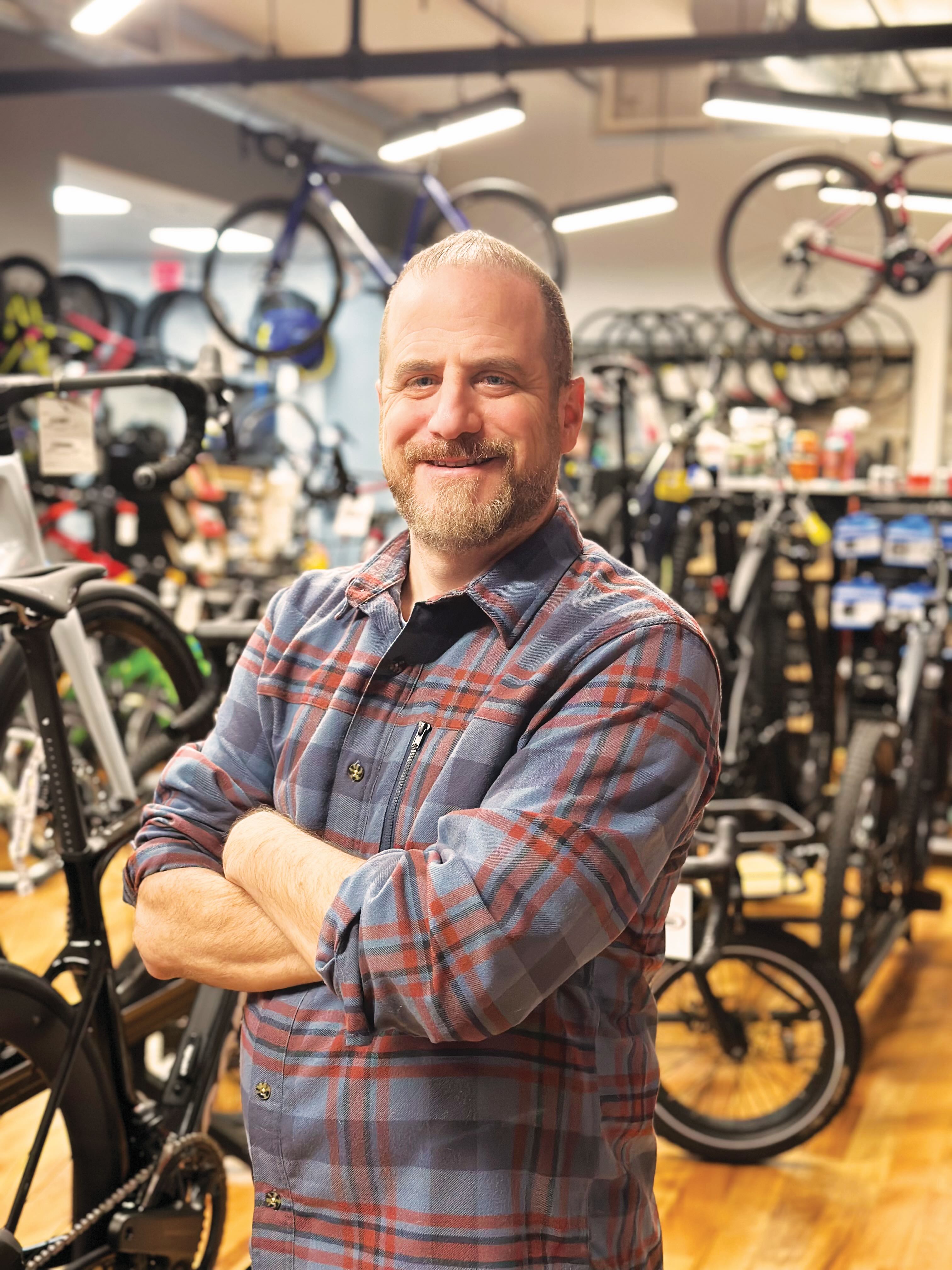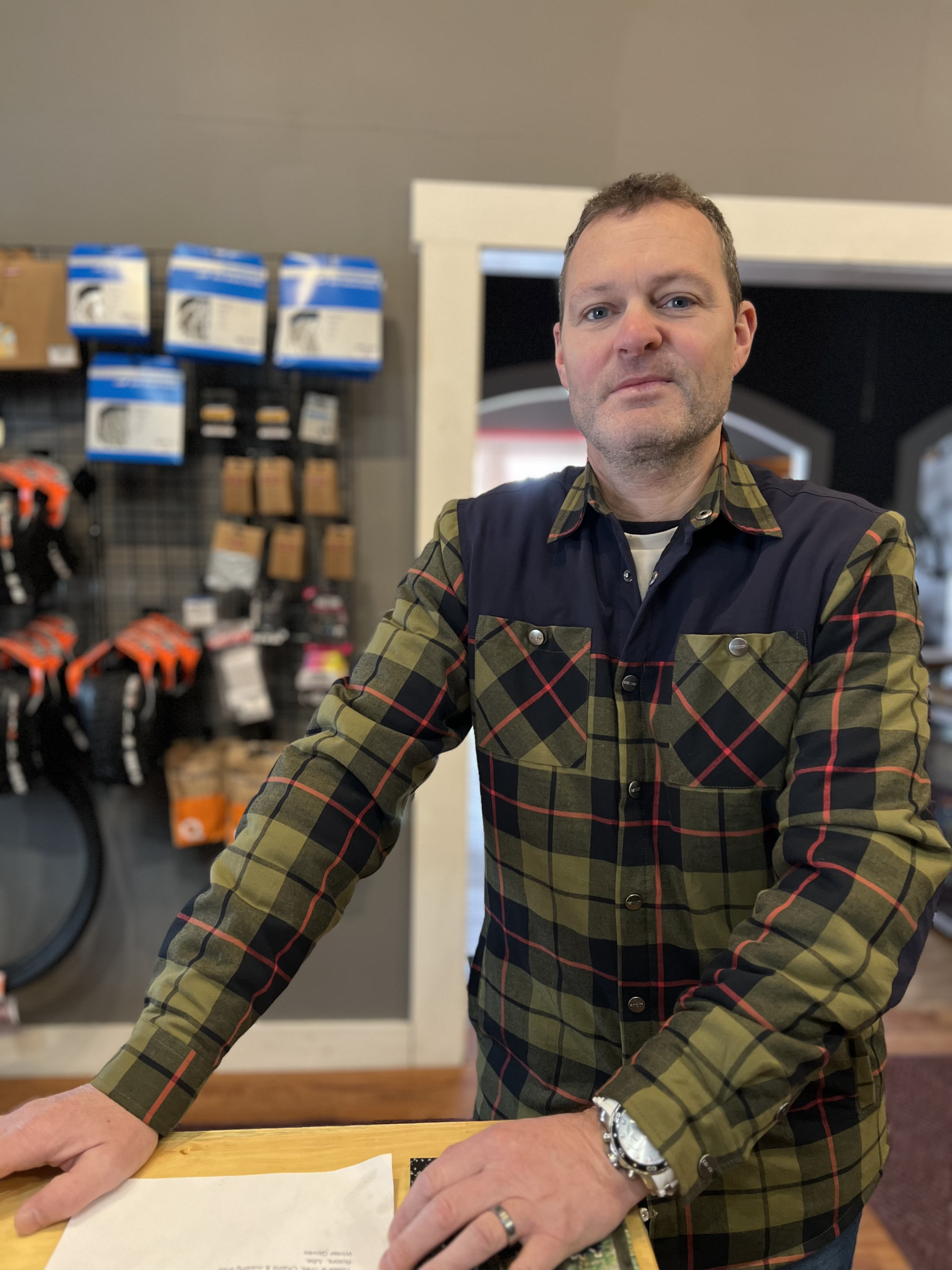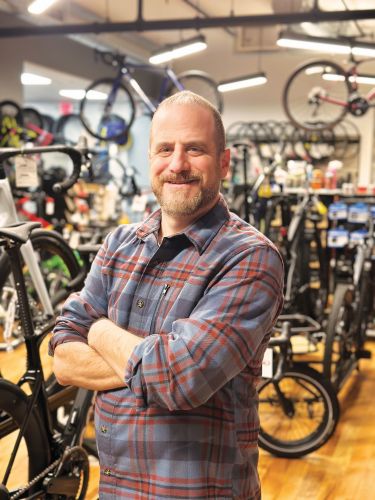A version of this feature ran in the October issue of BRAIN.
BOULDER, Colo. (BRAIN) — For our October magazine edition, we asked our State of Retail panel members: What are your challenges with theft and cybersecurity? What measures do you take to address them?
MONTCLAIR, N.J.: Dave Adornato, owner Montclair Bikery

Security is always a concern; however, we gauge it as a moderately low threat compared to previous years. Cybersecurity is an area in which we could benefit from more vigorous controls, although our POS system keeps customer's data secure, we have software on the shop computers, and our WiFi network is secure. For us, shoplifting is the primary issue even though it’s a rare occurrence. To minimize our risk from shoplifting and other theft, we installed cameras throughout the store as well as a security system that alerts us of break-ins and fires. The best prevention after cameras and security systems is an attentive staff. Everyone who comes through our door is greeted by staff to make sure they know there is help for them and they are not alone. We train our staff to be present, but not to hover. We want our customers to know we are available, and our attentiveness minimizes the chances that product will walk out the store.
During COVID, when customers wore masks, shoplifting and theft were a real problem. We were unprepared for theft during this time, but there was high customer volume in the store and a high percentage of new customers who were unfamiliar to us — plus they were masked. We upped our game after a particularly egregious incident when a couple were going from shop to shop, stealing bikes. One person distracted staff and the other walked out with a bike. Of course since masks were common during COVID, they were impossible to identify. They hit multiple shops before they vanished, never to be caught. Every shop that was targeted had video of the same people with masks, stealing bikes.
HARDWICK, Vt.: Jason Bahner, co-owner Riverside Cycles

We're a new shop (less than one year in business), and we don't have any comparison to determine how theft is trending for us. We have security cameras installed inside our business as well as outside to protect against shoplifting and break-ins. We have not invested in cyber security theft deterrents at this point. We believe in keeping it basic; we're in the business of trusting our community. Hopefully, people ask for things before stealing them.
WHEAT RIDGE, Colo.: Enric Die-Girbau, operations manager Rhythm Cycles

We gauge theft as a moderately high threat. Smash-and-grab is the main concern, with online phishing scams as a close second. To protect against shoplifting and smash-and-grabs, we have installed concrete bollards at every door, entry, and non-reinforced wall. We also have two metal gates at every door, an alarm system, and we’ve installed cameras in the store.
We’re fairly ignorant as a team in regards to cybersecurity, and it’s an area of opportunity for some education. We have so many vendor and supplier accounts with financial information stored, it's difficult to keep track of where and who has the ability to make payments. We have some practices in place to protect data: We do not store customer data of any kind outside of our point-of-sale system; we have monthly reviews of permissions and access; we have password refreshes as standard procedure; we use two factor authentication; and we provide phishing education for employees with regular email access.
COSTA MESA, Calif.: Lisa Fleischaker, owner The Unlikely Cyclist

Theft seems to be increasing and has affected our bottom line more than in previous years. Our main issue is shoplifting on the accessories side. To combat it, we have installed cameras, and we assign staff to accompany people to these areas as much as possible. I have found the most stolen items are lights, locks, and other small accessories — things that people need, and often can’t afford. We stock less expensive accessories on the floor, but the versions with higher costs are “display only,” and we keep the displays where we have eyes on them. For test rides, we started taking phones in exchange for the bike rather than a wallet. People are more attached to their phones these days. Our point-of-sale system has strong cybersecurity capabilities, and we use it for all business aspects where data is stored. We have been happy with its performance so far.
BOULDER, Colo.: Diana Freeman, owner/founder Cassiopeia

As a newer shop, we don’t know if theft is trending up or down for us, because we don't have that comparison. To protect against physical theft like smash-and-grabs, shoplifting, or parking lot break-ins, we believe that customer service is our best defense. We have measures in place such as two-factor authentication for our online platforms, using trusted SaaS partners, creating dedicated logins for every team member, installing security cameras and an alarm system, and conducting building security walks on a regular basis. At the end of the day, an engaged team with high customer engagement is the best tactic we have.
GREENWICH, Conn.: Rob Koshar, owner Greenwich Bicycles

Physical theft is not really an issue, and overall we would rate theft as a moderately low threat. The greater threat these days is from stolen credit cards used to make purchases on our web site. We’ve established a protocol that customers must come into the store to pick up online purchases and show their credit card and a government-issued ID that matches the credit card. We try to charge the card a minimal amount to see if it taps or swipes or is fraudulent. We don’t release the merchandise if the customer doesn’t park in our lot or sends an Uber driver to pick up. If they want merchandise shipped, we only send it to their credit card billing address. Some advice for newer retailers: get picture IDs for test rides and insist that customers park in your lot. Beware of rush orders from new customers for high-dollar amounts. If there are red flags, don't ignore them.
BELLINGHAM, Wash.: Staci May, co-owner Earl’s Bike Shop

The trend for theft issues seems to be about the same as ever, and we gauge it as a moderately low threat. Generally, we don't have much of a problem. Our shop is pretty small, and everyone that walks in gets greeted. For our cybersecurity, we rely on the measures put in place by Lightspeed and Workstand. One of our best practices is to be sure to have cameras that work and know how they work. We were the victims of a break-in once, and we caught half of the folks who got in. We didn't realize that our cameras didn't pick up anything without light, but now we know.
MIAMISBURG, Ohio: Sandy Whitman Talley, owner Whitman’s Bike Way Bike Shop

Theft is a moderately high threat for us. To combat it, we have cameras placed in multiple locations of the store. We also lock higher value and theft-susceptible items on slatwall hooks. And, we make every attempt to immediately address customer needs, limiting unattended opportunities. Be vigilant not only with your customer, but the employees as well. Have security measures in place; keep non-customer doors locked at all times. Have good lighting on the inside and outside of the store. Have a monitored alarm system and cameras in place. Keep firewall protection in place, along with relying on our contracted POS system in having protective measures in place.
SAN FRANCISCO: Brett Thurber & Karen Wiener, owners The New Wheel

Theft seems to be decreasing due to changes we've made in our stores. The best thing we ever did was invest in a Deep Sentinel monitored security camera system after we had a number of horrible break-ins between 2020 and 2022. This system, along with the installation of security shutters in our San Francisco and Oakland locations, has nearly eliminated break-ins. I would recommend that other shops invest in security early and not wait for a break-in to make changes. We made the mistake of not being thorough enough in our security investments after multiple break-ins and it was very costly.
We work to manage passwords and access very tightly so very few people have access to sensitive information.


